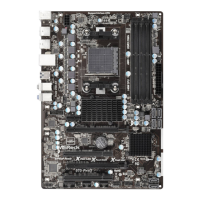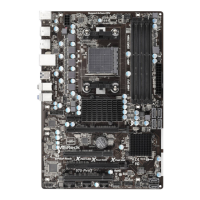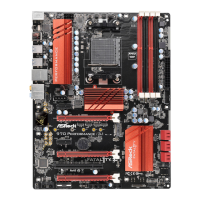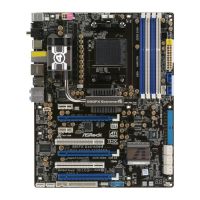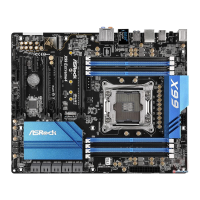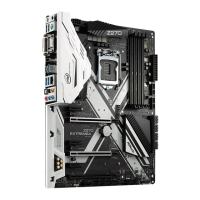
Do you have a question about the ASROCK 970 Extreme4 and is the answer not in the manual?
| Non-ECC | Yes |
|---|---|
| Memory channels | Dual-channel |
| Memory slots type | DIMM |
| Number of memory slots | 4 |
| Supported memory types | DDR3-SDRAM |
| Maximum internal memory | 32 GB |
| Supported memory clock speeds | 2100, 800, 1066, 1333, 1600, 1800, 1866 MHz |
| System bus rate | 4.8 GT/s |
| Processor socket | Socket AM3+ |
| Processor manufacturer | AMD |
| Compatible processor series | AMD Phenom II X2, AMD Phenom II X3, AMD Phenom II X4, AMD Phenom II X6 |
| Processor system buses supported | 2400 MHz |
| USB 2.0 connectors | 3 |
| Number of SATA III connectors | 5 |
| Number of Parallel ATA connectors | 0 |
| USB 3.2 Gen 1 (3.1 Gen 1) connectors | 1 |
| USB 2.0 ports quantity | USB 2.0 ports have a data transmission speed of 480 Mbps, and are backwards compatible with USB 1.1 ports. You can connect all kinds of peripheral devices to them. |
| USB 3.2 Gen 1 (3.1 Gen 1) Type-A ports quantity | 2 |
| Audio chip | Realtek ALC892 |
| Cooling type | Passive |
| Certification | FCC, CE, WHQL, ErP/EuP |
| Component for | PC |
| Motherboard chipset | AMD 970 |
| Audio output channels | 7.1 channels |
| Motherboard form factor | ATX |
| Motherboard southbridge | AMD SB950 |
| Compatible operating systems | Windows 8\\r Windows 7\\r Windows Vista\\r Windows XP |
| RAID levels | 0, 1, 0+1, 5, JBOD |
| Supported storage drive interfaces | SATA III |
| On-board graphics card | No |
| Parallel processing technology support | 3-Way CrossFireX, Quad-GPU CrossFireX |
| PCI Express slots version | 2.0 |
| Cables included | SATA |
| LAN controller | Realtek RTL8111E |
| Networking features | Gigabit Ethernet |
| Ethernet interface type | Fast Ethernet, Gigabit Ethernet |
| BIOS type | AMI |
| ACPI version | 1.1 |
| BIOS memory size | 32 Mbit |
| Depth | 244 mm |
|---|---|
| Width | 305 mm |
Lists the items included in the motherboard package.
Important safety and handling guidelines before installing components.
Step-by-step guide for installing the CPU into the socket.
Instructions for mounting the CPU cooler for effective heat dissipation.
Guide for installing DDR3 memory modules for dual-channel configuration.
Details on installing expansion cards into PCI and PCIe slots.
Instructions for setting up NVIDIA SLI technology for graphics cards.
Guide for installing and configuring AMD CrossFireX for multi-GPU setups.
Information on upgrading to Surround Display with external VGA cards.
Instructions for installing the ASRock Smart Remote with CIR header.
Explanation of jumper settings, including Clear CMOS.
Details on connecting internal components like SATA, USB, and audio headers.
Explains the function of onboard power, reset, and Clear CMOS switches.
Information on interpreting Dr. Debug codes for troubleshooting.
Steps for installing SATA3 hard disks into the chassis.
Explains Hot Plug and Hot Swap features for SATA3 HDDs.
Detailed operation guide for SATA3 HDD Hot Plug feature.
Instructions for installing system drivers from the support CD.
Guide for installing OS on RAID configurations for various Windows versions.
Guide for installing OS without RAID functions.
Explanation of Untied Overclocking Technology for stable overclocking.
Overview of the UEFI SETUP UTILITY and how to access it.
Explanation of the main menu bar options in the UEFI utility.
Description of the keyboard keys used for navigating the UEFI setup.
Displays the system overview and basic information in the UEFI utility.
Screen for configuring overclocking features and settings.
Section for configuring advanced system settings like CPU, Storage, etc.
Settings related to CPU features like Cool 'n' Quiet and Thermal Throttle.
Configuration options for the North Bridge chipset.
Configuration options for the South Bridge chipset.
Settings for SATA controllers, modes (AHCI, IDE, RAID), and SMART.
Configuration for Super IO devices like serial and infrared ports.
Settings related to ACPI power management features.
Settings for USB controllers, legacy support, and USB 3.0.
Monitors system hardware status like temperature, fan speed, and voltage.
Configures boot settings, priorities, and bootup options.
Manages system passwords (supervisor/user) for security.
Options to save/discard changes and exit the UEFI setup utility.
Information on supported Microsoft Windows operating systems.
Details about the included Support CD and its contents.



